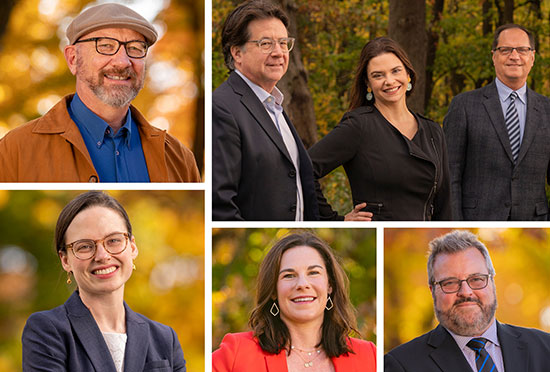
In this year of COVID-19, and the recession resulting from the economic shutdown, Wisconsin’s legal innovators came up with creative solutions to address a range of issues. The people behind these projects and programs focus on access to healthcare, compassionate release of dying prisoners, accuracy in forensic science, socially distanced assistance for domestic violence victims, and state court technological advances related to the pandemic itself.
Jump to a Wisconsin Legal Innovator
Through the That’s a Fine Idea: Legal Innovation Wisconsin initiative, the State Bar of Wisconsin invited the legal community to help tell the story of legal innovation. The goal of this program, now in its seventh year, is to showcase the people behind the best examples of legal innovation to help lawyers thrive in an ever-changing and highly competitive legal marketplace, says Tom Watson of the State Bar of Wisconsin Communications Committee’s Legal Innovation Subcommittee.
“When we thought ‘ever-changing,’ never in our wildest dreams did we consider a year like 2020,” Watson says. “With the COVID-19 pandemic, the economic downturn, and all of our lives completely upended, it is more important than ever that lawyers look at adapting in order to continue to serve their clients.”
The pandemic places an exclamation point on a decade of constant change in the legal profession since the Great Recession, underscoring the importance of lawyers communicating that clients can get the legal help they need and then finding ways to help them do so, Watson says. Part of the challenge involves adapting to clients’ expectations in terms of technology, which is forcing attorneys to change how they provide services.
“And while the profession may have been slower than others to embrace technology, I think lawyers have taken to it and have become far more technology savvy in the past several years,” he says. “So we look for lawyers and legal organizations who are responding to all of these changes in ways that have the greatest impact on clients.”
Two of the 2020 Legal Innovators awards went to those who developed service models directly in response to COVID-19, Watson notes. One was for an effort to develop a legal hotline for victims of domestic violence incidents, which were increasing in Milwaukee County but could no longer be handled in person for public-health-related reasons.
The other went to the state court system, which implemented videoconferencing software and livestreamed court hearings to keep the state’s legal system moving despite limitations and restrictions once the pandemic began. “This has been an absolute savior both for our legal system and the people who work in it, and for clients whose futures depend on these legal matters,” Watson says.
Other award winners include the people behind a compassionate release program based at the University of Wisconsin Law School and a consulting agency that has made advances in forensic science that have proved beneficial in the courtroom.
Lifetime Innovator Bobby Peterson: A Path to Healthcare Access
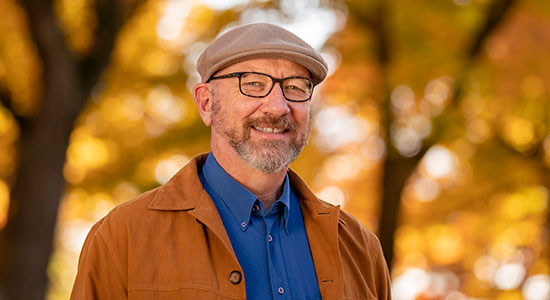
Bobby Peterson, this year’s Lifetime Legal Innovator, has a career-long passion to keep learning and thinking creatively to ensure all people, especially the most vulnerable, have access to healthcare. He is the executive director of Madison-based ABC for Health Inc. Under his leadership, ABC for Health has represented people who lack healthcare access, addressing health disparities as a social justice issue, and finding new ways to help people gain access to healthcare services. Photos: Andy Mannis
This year’s Lifetime Legal Innovator founded a nonprofit law firm that has spent three decades representing low-income people who lack healthcare access, Watson says. “Bobby Peterson has continually found new ways to help people who needed access to healthcare services, and he has been involved in state and national conversations about better ways to get that done,” he says.
Peterson, the executive director of Madison-based ABC for Health Inc., and a co-founder of the State Bar of Wisconsin’s Public Interest Law Section, became focused on uninsured or underinsured patients who couldn’t pay their medical bills while serving as a law school intern. He spent a summer working for the University of Wisconsin’s Center for Public Representation, which dispatched him to Turtle Lake, Wis., to investigate such cases.
“I followed up with [clients] and heard their stories,” he says. “They didn’t have the money, they didn’t have the [insurance] benefits, they didn’t understand eligibility, and they couldn’t fight claims denials. That inspired me to figure out, as an attorney, how could I do this kind of work?”
A Winding Road. Peterson’s inspiration came from his own background, growing up in a low-income, single-parent household. “We confronted challenges of health, bills, and an often unforgiving bureaucracy,” he says. “I heard the same challenges echoed in the conversations with folks in Turtle Lake in 1985 and still do with clients today.”
The road toward representing such families proved winding at first, as Peterson found health law firms mostly did transactional work on behalf of companies. But after backpacking around Europe and plotting his next move, Peterson was able to find work back at the Center for Public Representation about a year after graduation – it turned out the center had applied for and received grants based partly on his investigative work as a student.
“[The job offer] knocked me back on my heels – the shiver goes down your spine,” he says. “Suddenly, here was the path forward. It was an opportunity to apply my research.”
Peterson spent six years at the center, mostly working on a project called Families in the Changing Healthcare Marketplace, helping to train and support colleagues who served as health benefits counselors, assisting clients with claims, and then referring them onward to the attorneys on staff if they needed legal representation.
Alongside law school interns, he says, “We cracked open insurance contracts, looked at the law, found a lot of good cases, and helped a lot of families.”
Founding an Independent Agency. The center proved to be a “nice incubator,” Peterson says, but eventually he wanted to spin it off into an independent agency, as an elder law project had done a couple years earlier. Having built a critical mass of funder support and gained experience, in 1994 he founded ABC for Health, which has continued to do the same kind of work ever since.
Over the years, funding and staff levels have waxed and waned – ABC has employed as many as 25 people and as few as six, and currently sits “a bit lean given COVID” with 10 staff and two students, Peterson says. “With ebbs and flows in the economy, the money gets tighter, although the need certainly expands,” he says. “There’s usually a tipping point where we get a government grant or initiative – we say, ‘We’ve got to do something to help these people’ – and we’re able to build up our infrastructure.”
All told, ABC has helped more than 60,000 family members get access to healthcare and health coverage through a detailed, granular process known as “precision patient advocacy,” avoiding litigation whenever possible but turning to it when necessary, Peterson says. The agency has built up a reputation through statewide networks, partly in recent years through its subsidiary, Health Watch Wisconsin, which does outreach and education.
ABC has another subsidiary focused on the rural health issues that initially inspired Peterson, and the agency has founded a for-profit technology company called My Coverage Plan Inc., which developed a tool called Advocus that Peterson describes as “Turbo Tax for health benefits.” It’s software that guides a benefits eligibility and review process, assisting patients in getting their benefits and avoiding medical debt.

Know a legal Innovator? Are you one? Nominations for 2021 open March 1 and close on June 30. To learn more, visit ThatsaFineIdea.com.
Going “Social” During Pandemic. During 2020, ABC has responded to COVID-19 by rolling out its Pandemic Response Initiative, using a “garage-built” broadcast studio it created in 2007 to post videos on YouTube about accessing healthcare during a pandemic. “If we can get onto social media and get the word out to help people, that’s a win. A lot of important work gets done in the court of public opinion, not just the court of law.”
Brynne McBride, chief operating officer at ABC for Health as well as a public interest attorney herself, says that ABC and the Health Watch subsidiary have developed a large video library, including 80 specific to COVID-19. With 275,500 views and 2.6 million YouTube impressions, the video topics have ranged from whether a certain test is covered by insurance to how stimulus money affects the public.
“That’s also what lawyers do,” she says. “They’re teaching as well as trying to enforce rights and responsibilities of people they’re working with. It was a good way to reach a lot of people quickly.”
It’s a Social Justice Issue. More broadly, ABC for Health continues the mission that Peterson first laid down 26 years ago to address health disparities as a social justice issue, McBride says. “We’ve served tens of thousands of families,” she says. “We have an impact every time somebody has their rights enforced. It helps the family, it helps the doctor, it helps the hospitals, and it helps the local community be a little more stable. The impact of this type of work compounds.”
ABC provides a voice to those who don’t otherwise have one and are thus left to sort through confusion around the benefits and services they might be able to access, McBride says. “We have an attitude of creativity and always wanting to improve,” she says. “How can we reach more people? … When you’re in this role, you have to keep thinking and never sit still.”
Peterson ensures that happens with his own desire to keep learning and thinking creatively about how to adapt and apply what they learn in new ways, McBride says. “The laws and rules around healthcare and coverage are changing all the time, impacting families differently. He teaches us to be resilient, learn from those families, and think of new ways to make sure all people, especially the most vulnerable, have their voices heard,” she says.
One simple example of this is how Peterson reinforces the notion that his legal team should keep striving to ask better questions of clients in attempting to provide the best help, McBride says. “It reminds me of a movie quote I heard where a team of experts said something along the lines of ‘this is a house of questions, not a house of answers,’” she says. “The bigger picture of this approach is that to ask the right questions, we have to know our material [and] how it interfaces with the challenges our clients are facing, and precisely identify the legal issues at play. Then together, we can work toward better answers, and effect change.”
The legal profession and society in general could help those goals by fully funding civil legal services for low-income people, Peterson says. “Today, ABC for Health operates with less than one-third of the legal services funding we had in 2008,” he says. “Funding challenges promote a certain degree of creativity and innovation, but at some point, there are no rabbits left in the hat.”
Keith Findley, Kate Judson, Jerry Buting, and Dean Strang:
Improving the Reliability of Forensic Science in Courtrooms
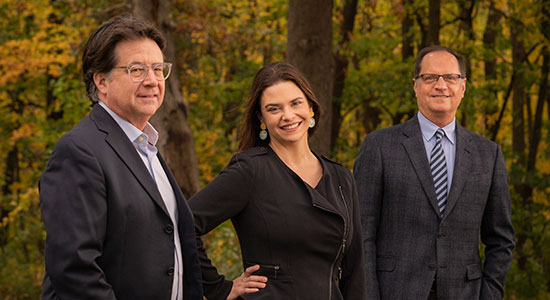
The Madison-based Center for Integrity in Forensic Sciences counsels attorneys about proper use of scientific forensic evidence. Founded by Keith Findley (not shown), Jerry Buting (right), and Dean Strang (left), and led by executive director Kate Judson, the center helps defense lawyers and prosecutors better understand science and explain it in the courtroom. Frustrated with their experiences trying to unwind tragic wrongful convictions following their clients’ unjust incarcerations, the founders formed the center to address one of the common causes of wrongful convictions: faulty forensic science.
Given that faulty, misleading, or false forensic science is responsible for an estimated one-quarter of wrongful convictions and innumerable other miscarriages of justice, the Madison-based Center for Integrity in Forensic Sciences has been working for the past few years to counsel attorneys about proper use of such evidence.
The nonprofit center was founded by Keith Findley, Jerry Buting, and Dean Strang, following the success of Making a Murderer, in order to reshape the way the legal system engages with forensic science. Frustrated with their experiences trying to unwind tragic wrongful convictions following their clients’ unjust incarcerations, they formed the center to address one of the common causes of wrongful convictions: faulty forensic science.
Everyone Deserves a Fair Trial. Although the center does work on wrongful convictions, it’s not an innocence effort, per se, says Kate Judson, the center’s first executive director, who joined it in 2019. “Everyone deserves a fair trial, no matter who they are and whether they’re guilty or innocent,” she says. “When misleading forensic science is used to convict someone, their trial wasn’t fair. That’s why we’re dedicated to improving the reliability of forensic science across the country and around the world.”
While forensic science can play into all types of cases down to petty misdemeanors, the center – the first organization of its kind – generally is consulted on more serious matters, ranging from death penalty cases to child custody hearings in which abuse has been alleged, Judson says. Occasionally, they engage in direct representation as part of a larger legal team.
“We do a lot of consultation, advising lawyers about ways to proceed in their cases, reviewing documents for lawyers who have questions, helping lawyers find expert witnesses, and work with those experts effectively,” she says. “And we also do attorney training, both for the prosecution and defense.”
Judson figures the center consults with more than 200 lawyers per year, ranging from a simple phone conversation on up to actual representation. They reach even more through their training programs. They recently helped secure the release of two women wrongfully convicted in child-death cases, one an accident and the other due to illness.
“These were women who we were very confident were innocent; we represented them alongside innocence efforts,” she says.
Education Efforts and Outreach. But more commonly, Judson says, the center helps lawyers better understand science and explain it in the courtroom. “We help lawyers spot testimony that isn’t supported by science and teach them how to respond to it,” she says. “We’re not just teaching lawyers how to litigate these cases, we’re teaching prosecutors to understand not to use flawed scientific evidence at trial and defense attorneys to identify and challenge unreliable scientific evidence.”
The center also works alongside other experts in the field, such as the Center for Statistics and Applications in Forensic Evidence (CSAFE), to keep up with developments, given that science is always changing. “Statistics are often overlooked, but they’re very important,” Judson says. “Sometimes the evidence itself is not as probative as the statistics behind it. If a DNA sample has a number of points where it ‘matches’ a suspect’s DNA, that is meaningless information without knowing how many other people match up. Failure to understand and communicate statistical information is a common error that we see.”
The center does outreach through referrals, social media, and its website, and the staff hope to expand the center so it can serve more clients and attorneys and make sure people don’t have faulty forensic evidence introduced at their trials. “We want to continue to serve people,” she says, “regardless of which side of the courtroom they’re on.”
Judge Randy Koschnick: Transforming Court Operations During a Pandemic
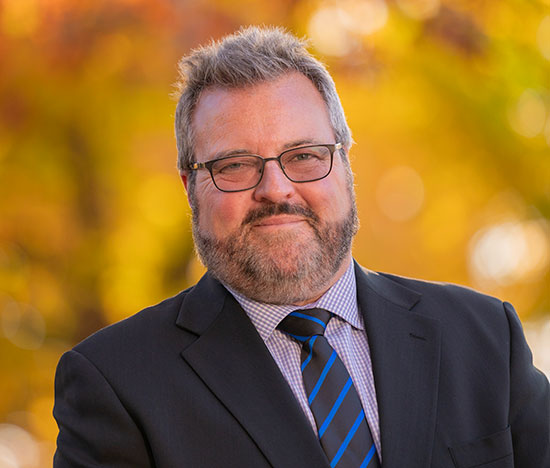
To keep courts running during the pandemic, Judge Randy Koschnick, Wisconsin’s director of state courts, and his court operations and automation teams leapt into action the week of March 17. They bought 400 Zoom licenses and integrated Zoom with existing videoconferencing technology, and they trained each of the state’s 249 circuit judges and clerks to use it. Next steps? Consider how to capitalize on Zoom technology in court operations post-pandemic.
In the late winter, Judge Randy Koschnick, director of state courts in Wisconsin, was reading about the effects of COVID-19 in China and then Italy and other parts of Europe. And he kept thinking, “What are we going to do if it comes here? How are we going to keep courts running?”
An 18-year veteran of the bench before he took his current position, Koschnick knew he couldn’t sit still, what with prisoners sitting in county lockup, domestic abuse victims seeking protection, custody hearings pending, and defendants with the constitutional right to confront their accusers awaiting trial.
Although the Jefferson County courts where he served went to videoconferencing about 15 years ago, Koschnick had never heard of Zoom until last year, when a charity for which he’s a board member got a license. “I just started thinking about how Zoom technology would be useful in court,” he says. “I knew Zoom was easy to use. I’m not particularly technologically sophisticated.”
Going Virtual. During the week of March 17, Koschnick and his court operations and automation teams, spanning more than a dozen top staff, leapt into action. They bought 400 Zoom licenses and began integrating Zoom with the videoconferencing already in place and training each of the state’s 249 circuit judges, as well as clerks, to use it. “It was a huge lift,” he says. Koschnick credits Jean Bousquet, CIO and head of CCAP, and Diane Fremgen, deputy director of Court Operations, with skillfully leading their respective teams into such uncharted technological waters.
Milwaukee County Circuit Court was the first to put in an order, but before long other counties followed suit by creating their own unique local orders, creating a somewhat inconsistent patchwork. The Wisconsin Supreme Court then stepped in and issued a series of statewide orders that provided both consistency for COVID-19-related safety standards, based on the COVID-19 Task Force pulled together by Chief Justice Patience Roggensack, and some flexibility for individual counties.
“We had to come up with standards for judges and clerks to follow, so we could maintain the integrity of the proceedings,” Koschnick says. “We needed to guard against Zoom bombing. But the other problem was, we had to keep the courts accessible to the public.”
So they turned to YouTube, which provided the ability for people not party to a case to hear audio and see video without being able to interrupt, Koschnick says. He and his team then spent time visiting courthouses to make sure everything was running smoothly, integrating Zoom with a wide variety of videoconferencing equipment. Budget-wise, it worked out because he was able to reallocate unspent money saved from anticipated meeting and conference expenses.
Jury trials were able to resume on May 22, but most other proceedings have remained online, in the spirit of the Wisconsin Supreme Court’s order. “I think it’s gone as well as could be expected,” Koschnick says. “I had a lot of sleepless nights worrying about electronic equipment not working, judges not liking it, or citizens and litigants not being able to use it. Access to justice was my main concern.”
Koschnick has pulled together a committee of several judges, clerks, and private- and public-sector attorneys to determine how the state can and should continue to use Zoom going forward. He thinks it could prove useful for status hearings or simple cases like traffic tickets that people don’t think are worth taking the time to travel to court and fight. “You can step out into your car, or the break room, pull out your smart phone, and listen to the hearing,” he says.
Koschnick credits the state court staff as well as judges, clerks, and attorneys statewide with making a rapid adjustment.
“Normally, we would roll out a project like this over the course of a year, with pilot counties, a study committee, troubleshooting, and vetting it through the judges,” he says. “This was the opposite: Flip the switch, buy the licenses, and do the best you can to roll it out. And then improve on it. But it’s a real switch from the way we like to do things.”
Renagh O’Leary: Advocating for Compassionate Release of Prisoners
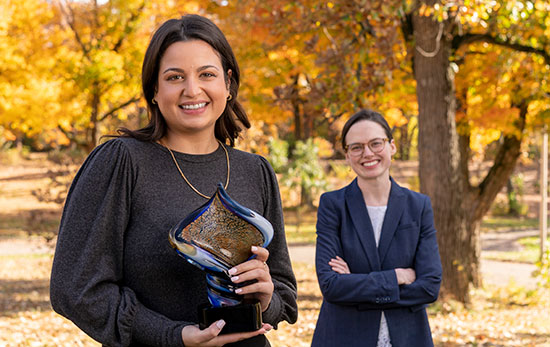
The Legal Assistance to Incarcerated People project at the U.W. Law School serves prisoners dealing with life-limiting or terminal medical conditions by advocating for compassionate release. Since February 2019, Renagh O’Leary (right), project leader and clinical assistant professor, and the law students with whom she works, including Mckenna Kohlenberg (left), have succeeded in six early-release cases.
The Legal Assistance to Incarcerated People (LAIP) project at the University of Wisconsin Law School serves prisoners dealing with life-limiting or terminal medical conditions by campaigning for compassionate release. It is one of only a few clinical legal programs in the country to tackle compassionate release cases.
Although LAIP assists Wisconsin prisoners with post-conviction legal support in a range of areas, the project stepped up its services for compassionate release clients when Professor Renagh O’Leary joined the law school faculty in the summer of 2018. Since February 2019 she and the law students with whom she works have succeeded in six cases.
“The need for compassionate release is so compelling,” she says. “There are, unfortunately, not many lawyers who can do these cases. … And, as a clinical program, the educational component of this work is important, too. These are incredibly meaningful experiences for students. Students can see in such a concrete, tangible, and emotional way the difference that their advocacy can make.”
Serious Illness Can Strike Anyone. Most prisoners have little contact with attorneys once they are sentenced and their cases conclude, aside from appellate lawyers working on direct appeals, O’Leary says. “Serious illness can strike any one of us,” she says. “We’ve represented clients in their 80s and clients in their 20s who have received life-altering diagnoses. … They want what a lot of us would want – these diagnoses shake people to their core – to spend as much time as they can with family, saying goodbye, and making things right.”
The hearings begin before a committee of Department of Corrections staff members, and if that committee approves the release, it goes to the sentencing court for a final hearing. Sometimes prosecutors oppose the proposal at that stage, but more commonly they support the request, O’Leary says.
“A big part of our advocacy is bringing the case to the prosecutor in such a way that they can be persuaded to support it,” she says. “My students do a fantastic job at that. … We want to shift the focus away from the crime and conviction, and toward our client’s life and our client’s often incredibly tragic situation brought about by their medical condition. When you can convey what it means, most people hearing those kinds of stories support release.”
O’Leary and her students learn from every case. “One of the huge benefits of being a clinical educator is that the students bring so much creativity, and insight, and energy to these cases,” she says. “They always have some sort of new idea or novel argument or insight about how we should be preparing for the hearing. … They’re constantly thinking about how they can innovate in the process to make it more effective for our clients. I hope that we can continue growing the number of clients we serve.”
O’Leary figures that the number of people who will need compassionate release will continue to grow. “Our prison population is graying. The proportion of older people in the prison population has increased quite a bit over the last 20 years,” she says. “Certainly, COVID-19 has underscored that to an enormous degree. It’s a piece of the mass incarceration story – more people getting longer sentences means we now have a prison population that’s much older than it was a generation ago.”
Emily Fons: A Hotline for Domestic Abuse Survivors
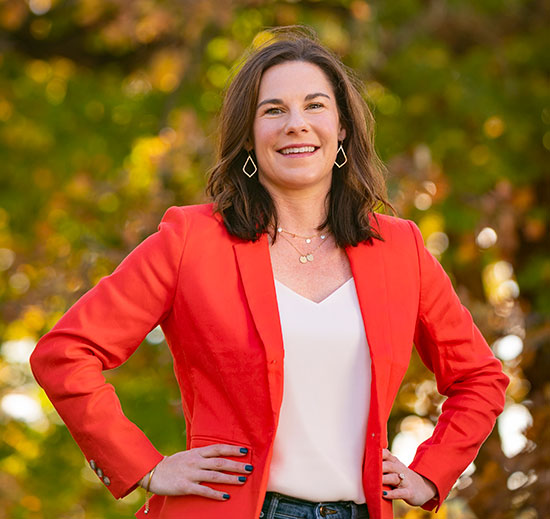
Co-chaired by Emily Fons and Joe Poehlmann (not shown), the “Lawyer for a Day” program has brought attorneys to the Milwaukee County Circuit Court on Tuesday afternoons to represent survivors of domestic abuse on a limited-representation basis. When COVID-19 struck, the dilemma was figuring out how to help petitioners who had to go to the courthouse to get restraining orders but to do so without volunteers actually being present. The solution? A telephone hotline, using a Google phone number that petitioners can use to call and speak with an attorney about the particulars of their cases.
When COVID-19 hit, domestic violence skyrocketed, and the “Lawyer for a Day” program that has represented domestic violence victims in person in Milwaukee County Circuit Court for the past few years had to find a new way to deliver its vitally important assistance.
The partnership among Sojourner Family Peace Center, Marquette University Law School, and Quarles & Brady LLP has brought attorneys to the courthouse on Tuesday afternoons to represent survivors of domestic abuse on a limited-representation basis.
From January to April 2020, there were as many domestic homicides in Milwaukee as in all of 2019. And the Lawyer for a Day program shut down in mid-March due to pandemic-related safety concerns, although the courts remained open to handle restraining order hearings. This presented a dilemma.
“You still had to go down in person, stand before the family court commissioner, and argue the case, as to why you needed a restraining order,” says Emily Fons, who co-chaired the Lawyer for a Day Program, and who recently left Quarles to join Godfrey & Kahn S.C. “But attorneys did not feel safe going down there.” The resulting dilemma to be solved: “How do we help these people who have to go down to the courthouse to get these restraining orders, but how do we do that at arm’s length because we can’t physically be there?”
Creating a Telephone Hotline. Fons, who last December became a board member at Sojourner, which provides domestic violence prevention and intervention services, together with her co-chair, Joe Poehlmann, an associate in the Quarles litigation group, spearheaded an effort to create a telephone hotline, using a Google phone number that petitioners can use to call and speak with an attorney about the particulars of their cases.
For starters, they explain how to check in with the sheriff upon arrival at the courthouse. “For many of these victims, this might be their first time in a courtroom, and now they have to appear pro se, in an emotionally charged, intense situation,” she says. “God forbid, if their abuser does show up, how do they handle that?”
The hotline, which operates on Tuesday afternoons like the former in-person program, was up and running by June and receives calls from about three or four people each week, about half the number that used to show up in person, Fons says.
“We’re still reaching people, it’s just not as many people,” she says, adding that applications for restraining orders are down more than 50 percent. “I was glad we were in a position to help. Things like this take a village. … Everybody saw the need, and we worked together to come up with a solution.”
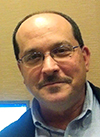 Ed Finkel is an Evanston-based freelance writer.
Ed Finkel is an Evanston-based freelance writer.
Fons would have preferred to continue representing clients via Skype or Zoom, but the domestic violence courtroom does not have the technical capability to play videos or even voice mails, she says. “That was a hurdle that existed,” she adds. “There was no way for us to be able to get around that.”
About seven attorneys are on the volunteer roster, Fons says. Sojourner Family Peace Center provides the attorneys with the filed petition for the domestic abuse injunction and an intake summary sheet that covers any potential past abuse the petitioner may have experienced from the abuser.
The attorneys review those summaries and the filed petition and then connect with petitioners, who often want to know, first off, what they’re going to have to say. “For a lot of people, talking about what’s happened to them is reliving the trauma,” Fons says. The attorneys provide counsel on how to focus their petitions, making sure to state all the relevant acts, hit the key points, and fill in details.
“The details are key,” Fons says. “Saying, ‘He hit me,’ is in itself an awful statement. But saying, ‘He hit me on the left side of my face, and I had a bruise, and here’s a picture of it,’ makes your statement more credible. A lot of restraining-order situations are he-said, she-said.”
When victims ask what to do if their abuser shows up in the courtroom, attorneys can no longer provide the reassurance that they will be there in person. But they can still say that the sheriff will be in the room, and an advocate from Sojourner will be there, and that a temporary restraining order is automatically in place within the courtroom. “There are legal protections and actual physical protections when they are there,” she says.
Fons plans to return to in-person representation as soon as the pandemic ends, and she plans to return to conversations with other Milwaukee-area law firms about representing victims on additional days and times, given the 50-100 restraining orders typically filed in the county every week. “Just Tuesday afternoons are certainly not enough to make an impact,” she says.
Looking Forward
Watson looks forward to the next round of Legal Innovators, confident that lawyers will continue to explore new ways to serve the public. “The pandemic has certainly forced us all to reevaluate how we’re working, and the legal industry will see an entirely new category of legal matters emerge as a result,” he predicts. “I’m confident we’ll see even better and more efficient service models emerge over the course of the next couple years.”
Hey Innovator, What Do You Think?
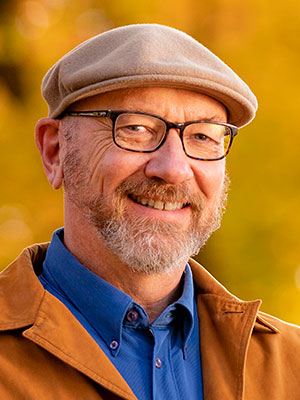 Bobby Peterson: How do you recharge your batteries?
Bobby Peterson: How do you recharge your batteries?
Travel, with a spirit of adventure, invigorates my thinking and stimulates new ideas. Breaking free from the daily norm to travel to parts unknown refreshes my spirit and exposes me to the “on-the-road skills” of approaching challenges with resiliency, resourcefulness, and creativity.
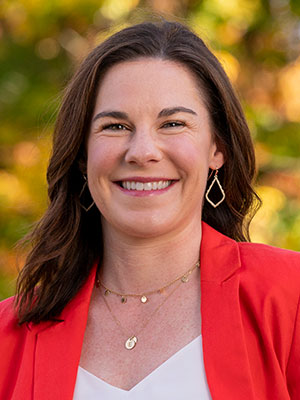 Emily Fons: How do you view failure?
Emily Fons: How do you view failure?
I don’t think of failure as a final act. Failure is a temporary state on the way to success. Failing is an opportunity to try again, with more information, which means you’re better prepared to overcome the hurdles in your path.
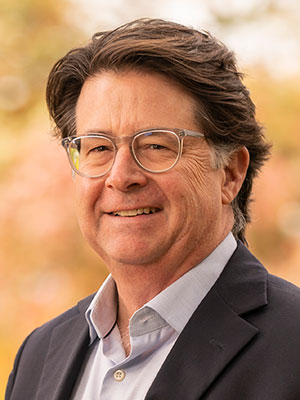 Dean Strang: How do you go from idea to action?
Dean Strang: How do you go from idea to action?
As quickly and directly as I can, usually by putting one foot in front of the other and then calling someone for help. But I so rarely encounter this challenge because I only infrequently have an idea in the first place (said with a wink).
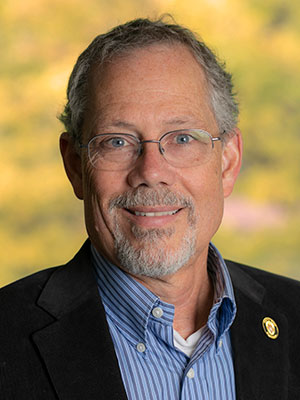 Keith Findley: Where do you get your best ideas?
Keith Findley: Where do you get your best ideas?
Rarely are the best ideas the product of solo efforts. Brainstorming with colleagues and collaborators almost always produces the best ideas, by stimulating new thoughts and new ways of looking at a problem, and by fostering deeper understanding of a problem.
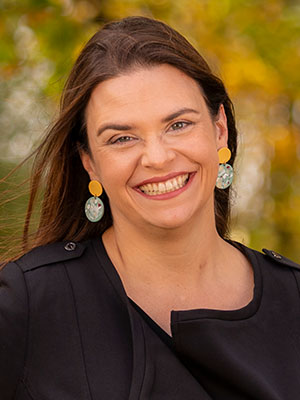 Kate Judson: How do you spot opportunities to innovate?
Kate Judson: How do you spot opportunities to innovate?
Innovation is far less about strokes of genius and almost entirely about hard work, learning, collaboration, and listening. I spot opportunities to innovate by learning as much as I can about a subject and really immersing myself in it, including listening to others about their observations and needs. Rushing in to offer solutions without fully understanding a problem is ineffective at best and can even be harmful. True innovation requires humility, an open mind, and a collaborative approach.
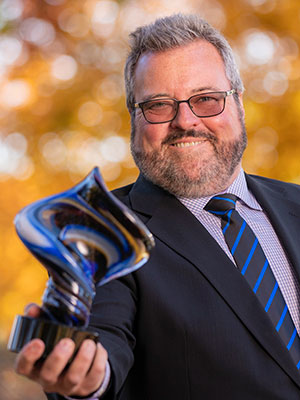 Judge Randy Koschnick: How do you go from idea to action?
Judge Randy Koschnick: How do you go from idea to action?
The key to successful innovation as a leader is to surround yourself with people who are talented, smart, and committed to the cause. Encourage them to speak freely and honestly about the presenting challenge. Set the expectation that all discussions will be confidential and respectful but that a critical, transparent, and honest group analysis of any proposed plan of action is necessary to success.
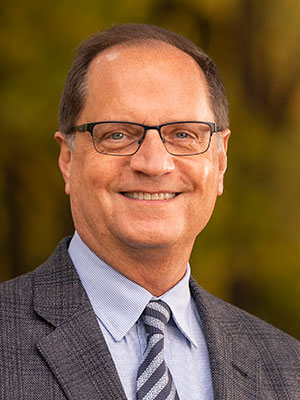 Jerry Buting: What gets in the way of lawyers innovating?
Jerry Buting: What gets in the way of lawyers innovating?
Inertia. We get comfortable doing things a certain way, just like we do handling some types of familiar cases and passing on unfamiliar ones. Sometimes it takes a crisis to overcome inertia. The pandemic forced all of us to innovate to survive and continue to cultivate our friendships and work requirements. But we can overcome inertia even when times are good. Whenever you feel yourself getting too comfortable in your practice that may be a sign it’s time to push harder and stretch yourself.
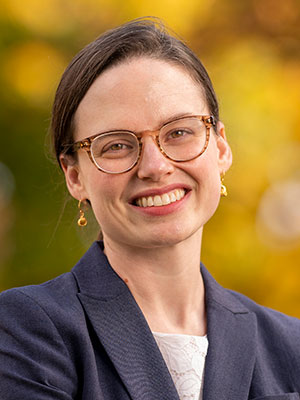 Renagh O’Leary: How do you get your best ideas?
Renagh O’Leary: How do you get your best ideas?
I get my best ideas from conversations with my students. As attorneys, it’s easy to fall into the trap of thinking, “Well, that’s just the way things are done.” But our clinic students instead ask, “Why are we doing things that way in the first place?” Their creativity and fresh thinking inspires me.
